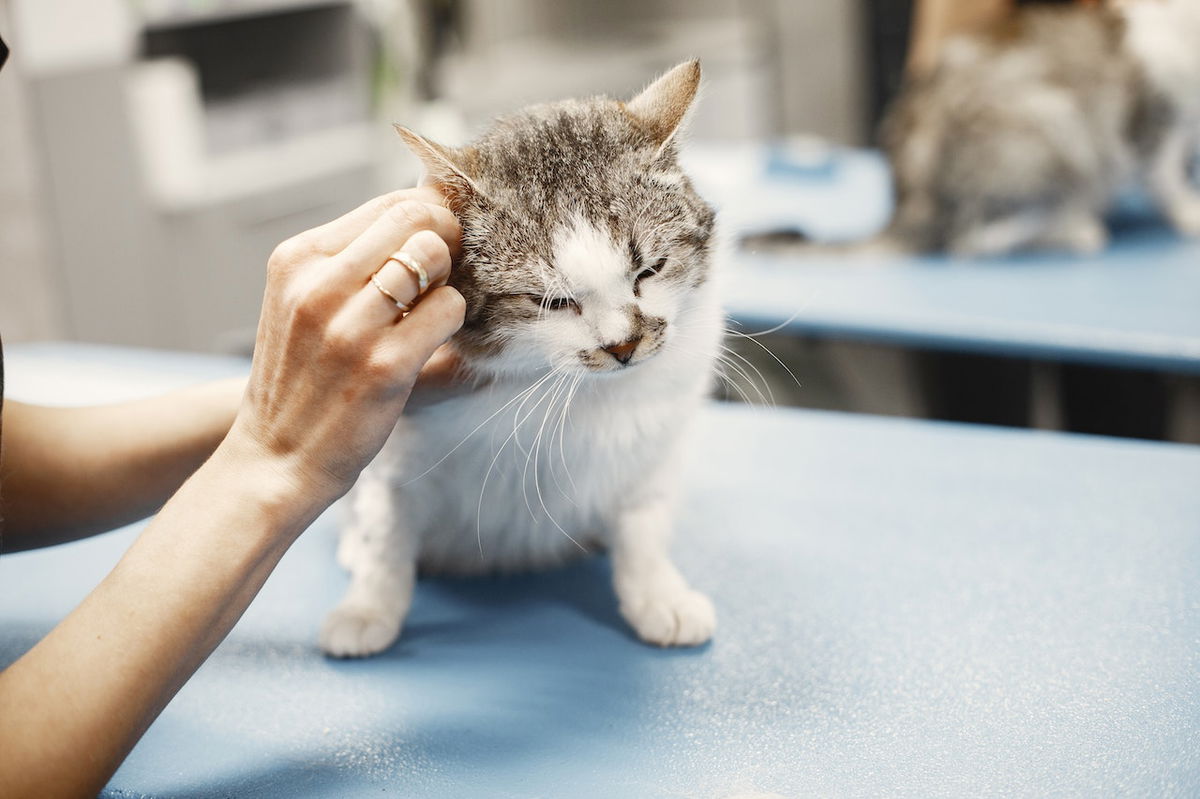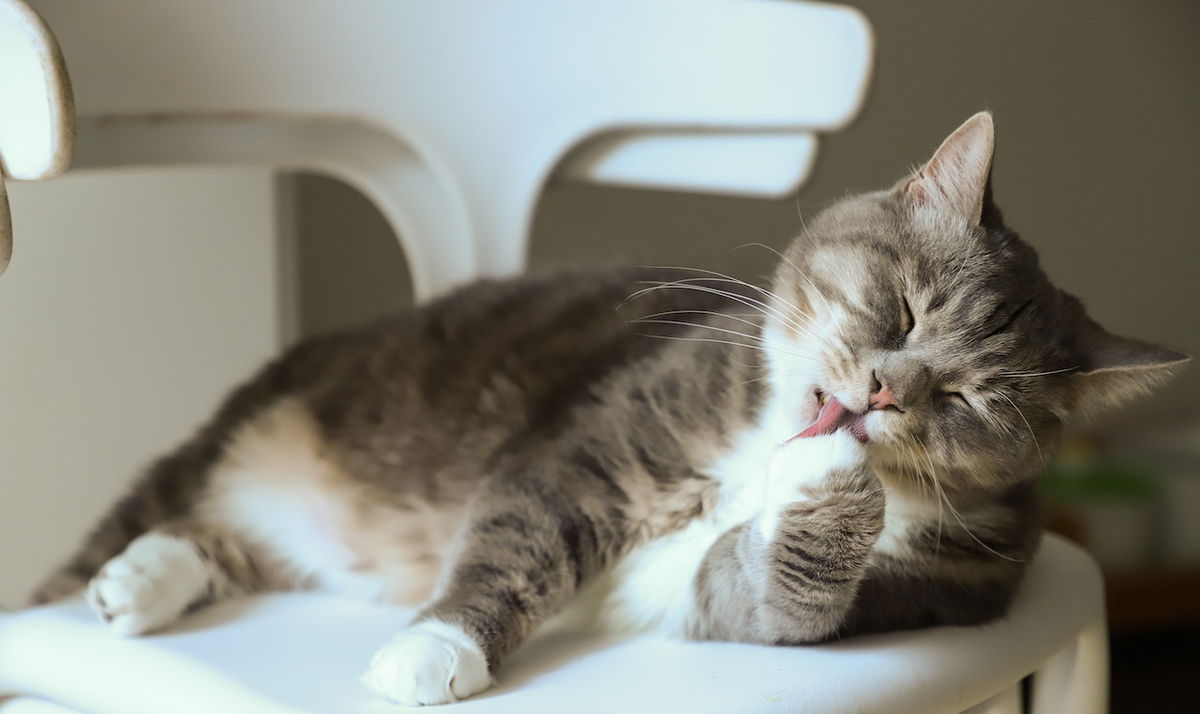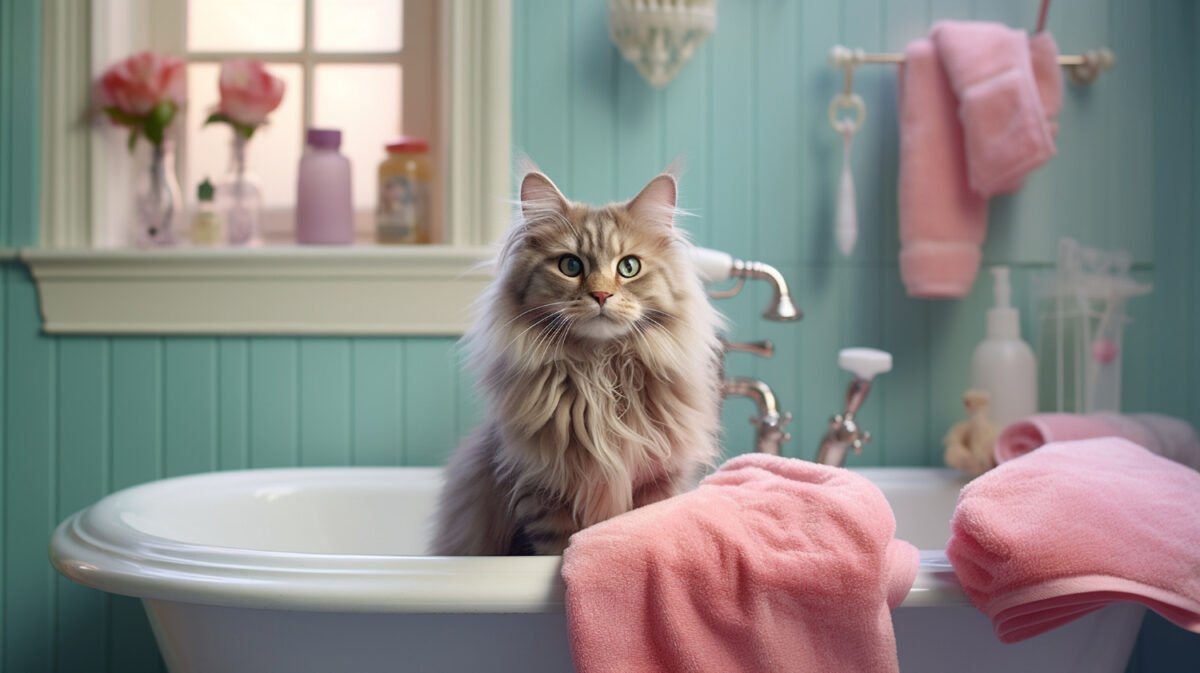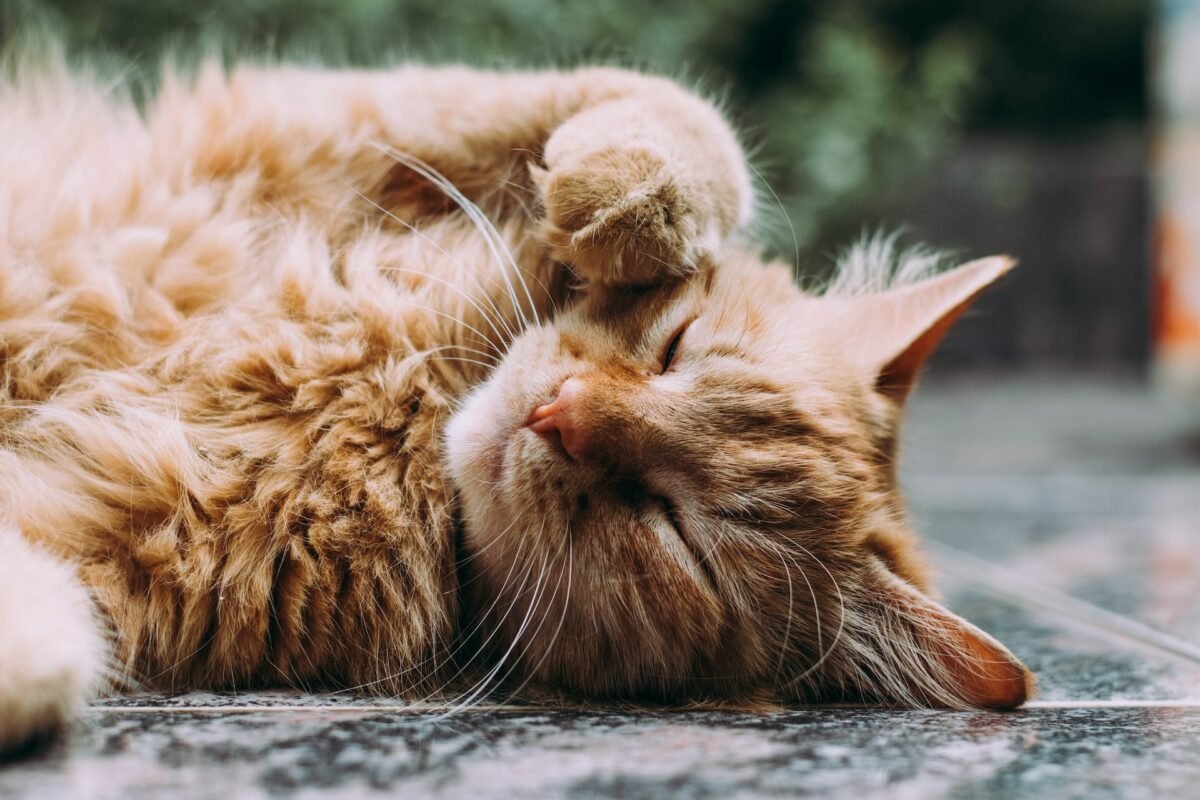We're an affiliate
We hope you love the products we recommend! Just so you know, we may collect a share of sales or other compensation from the links on this page at no additional cost to you. Thank you if you use our links, we really appreciate it!
The presence of small white flakes on your cat’s skin may leave you questioning their skin condition and coat health.
Luckily, small amounts of feline dandruff are quite normal and should not raise concern since it’s a major part of reconstructing the skin.
But the problem comes when you notice large amounts of dandruff floating around your cat’s fur.
Keep in mind that this problem does not only affect your cat’s cosmetic appearance, but it also tells a lot more about their internal health condition.
Find out more in this post as we uncover the hidden mystery behind the flaky dust on your cat’s skin, and provide a practical approach you can use to help your feline friend.
Is Cat Dandruff Normal?
Small amounts of cat dandruff are quite normal especially if your cat is not properly hydrated or during the dryer months.
However, excessive flaking of the microscopic skin cells accompanied by prolonged redness and intense itching can indicate various conditions that need immediate treatment.

Significant hair loss around the flaking area can also be a sign of severe problems underneath the surface.
For the most part, dandruff in cats can be managed with adjustment of grooming routine, diet, or through an administration of internal medicine.
What Are the Symptoms of Cat Dandruff?
1. Tiny white flakes
The most obvious sign of cat dandruff is the presence of white or grey flakes on your cat’s coat, which are normally concentrated on the lower back, and neck regions.
The tiny scales will often fall off the cat’s body when the cat is touched or shakes their entire body as they walk.
2. Excessive scratching
In addition to the visible signs, the other symptoms that your cat may have dandruff include excessive scratching and licking of a particular scurvy area on the skin.
Cats are clean animals, and they can spend long hours grooming themselves.
But, if you notice that your cat is excessively licking a particular spot, then this can be a sign of itchiness caused by scurvy skin.
3. Residue on fur
You may also notice a greasy or waxy residue on your cat’s fur, especially in areas where they have been scratching or licking too much.
This residue can cause your cat’s coat to appear dull, a significant deviation from their normal glossy looks.
4. Inflamed skin
The skin underneath your cat’s fur might appear red or inflamed due to the constant scratching. In some cases, the skin might also feel unusually dry or too oily when touched.
5. Sudden change in behavior
Some cats may also show sudden changes in behavior, such as becoming restless or having reduced appetite due to discomfort on the skin.
6. Hair thinning
In severe cases, prolonged flaking of the skin can lead to hair thinning and significant fur loss. This can cause your cat to have bald patches around the affected areas.
Why Does A Cat Have Dandruff?
1. Lack of proper grooming
Poor grooming can cause your feline friend to form dandruff in addition to the accumulation of dirt in the undercoat.

Elderly cats, or those with chronic conditions such as obesity and arthritis may have difficulties in grooming certain parts of their body.
Dental diseases and oral injuries can also limit your cat’s grooming abilities due to the pain experienced when licking the coat.
2. Poor diet
Providing your cat with a balanced diet is essential in nurturing their skin and coat to maintain a glossy appearance.
On the flip side, a poor diet that lacks essential fatty acids such as omega-3 can cause your cat’s skin to dry and flake off.
3. Dehydration
A balanced diet should go hand in hand with proper hydration for maximum efficiency. A lack of enough drinking water can cause your cat’s skin to dry and come off in tiny flakes.
Relying on too much dry foods can also cause your cat to get dehydrated due to the lack of moisture content in the diet.
4. External parasites
The presence of external parasites such as mites, fleas, and lice on your cat’s coat can cause various skin conditions including hotspots and dandruff.
Cheyletiella mites ‘walking dandruff’ can cause the highly contagious condition known as Cheyletiellosis.
These whitish mites are quite large and can be seen crawling on the surface of your cat’s skin and that’s why they were nicknamed the ‘walking dandruff’.
This condition is characterized by inflammation, itching, and scaling of the skin, which is a prime reason for excessive cat dander.
5. Underlying health conditions
Your cat’s dandruff situation may also point to an underlying feline health problem causing the scaling of skin as a symptom.
In most cases, sickly elderly cats may have difficulties in self-grooming, and this causes the skin to flake off due to dryness and poor health.
Some of the medical conditions that may cause this condition include arthritis, kidney diseases, pancreatitis, or diabetes.
Feline cancer such as cutaneous lymphoma can weaken the immune system and cause your cat’s skin to scale, in addition to other clinical symptoms.
6. Skin infections
Bacterial and fungal infections on your cat’s skin can cause dandruff in addition to other side effects such as itchiness and hotspots.

These dermal infections can disrupt the normal balance of yeast and bacteria on the cat’s skin and may cause the skin to flake off.
How Do You Get Rid Of Cat Dandruff?
You can treat your cat’s dandruff issue by adopting a practical approach that seeks to address the possible primary causes.
The following are some of the things you can do to restore your cat’s coat to its previous glossy condition without skin flakes.
1. Provide a balanced diet
Your first solution should be aimed at providing your cat with high-quality meals that include all the necessary nutrients and minerals.
A balanced diet can help your cat maintain healthy skin with a glossy coat, free from excessive flaking.
Ensure your cat gets enough supply of proteins, vitamins, and minerals such as zinc, and copper to keep them away from potential dermal problems.
You may need to choose wet cat foods to improve your cat’s hydration and keep their skin moistened to prevent it from coming off when scratched.
2. Dietary supplements
Adding supplements such as fish oil, omega-3 fatty acids, and coconut oil to your cat’s diet can replenish the natural skin oils and improve the coat condition.
You can also use probiotics to balance your cat’s skin bacteria by removing the excessive bad bacteria and enriching it with sufficient good bacteria.
Probiotics have also been proven to improve gut health which subsequently reduces the inflammatory skin diseases causing scaling.
Healthy good bacteria can also provide a protective barrier on the skin to prevent premature skin shedding and drying.
3. Grooming
Visible signs such as whitish flakes on your cat’s coat are enough evidence that they need an improved grooming routine.
We’d recommend you introduce regular bathing in addition to daily brushing to improve your cat’s skin health and coat condition.
Make sure to glide through your cat’s coat using the right brush and do so in the right direction.
Brushing can also help stimulate the production of natural oils on the skin keeping the cat’s coat glossy and soft.

Always ensure that you use cat-specific shampoo when bathing your feline friend. Avoid human grooming products since they can be harsh on the already dry cat’s skin.
It may help if you go for a specific shampoo formulated for moisturizing the cat’s skin and dealing with tough dandruff.
Such shampoos are made with natural ingredients that keep the skin moistened and prevent it from scaling even with scratching or biting.
Overbathing your cat could lead to more drying since it strips the cat’s skin of the natural oils to keep it flaky.
Taking your cat to the shower once every four or six weeks is enough to keep them clean and with good coat health.
Feel free to add some self-grooming products around their environment to stimulate physical stimulation and self-cleaning.
You can also use topical dermal sprays to moisten your cat’s skin to reduce flaking and stimulate the production of natural oils.
4. Improving the environment
Upscaling your cat’s environment at home can make all the difference in their skin, coat, and emotional health.
Using a humidifier can help moisten the air to prevent it from drying out and causing the cat’s skin to scale. It also eliminates particulate matter which could exacerbate other conditions.
Adding about 10 drops of lavender oil to 4 cups of water in the humidifier can help reduce emotional distress and anxiety in cats, reducing their chances of hair loss or excessive licking.
You can also include an air filter to make sure your cat breathes in fresh air and to provide a calming environment that does not worsen their coat condition.
5. Visit the vet
If your cat’s scurvy skin seems to be an indicator of underlying health problems, we recommend you visit the vet for early diagnosis and prompt treatment.
You should aim at treating the underlying health problem instead of brushing off the excess flakes on your cat’s coat since this is just a mere symptom of a larger problem.
Your appointment will start with an inquiry into your cat’s self-grooming habits, your brushing schedule, changes in diet, and environmental conditions to ascertain the possibility of different triggers.

After doing the preliminaries, your vet will perform a thorough physical examination by inspecting your cat’s skin and coat for dryness, redness, flaking, and external parasites.
They may also perform other diagnostic tests including skin scraping to observe the flakes under a microscope, and fungal cultures to identify possible infections.
A blood work procedure may be recommended to check for the possibility of other underlying medical conditions causing the skin to flake off.
Frequently Asked Questions (FAQs)
1. Can parasites cause cat dandruff?
External parasites such as ticks, fleas, or demodectic mange can cause your cat’s skin to itch, leading to excessive scaling and flaking.
2. Why does my cat have dandruff all of a sudden?
Several reasons may cause your cat to suddenly have dandruff, including poor grooming, and infestation by external parasites.
Sudden changes in your cat’s environment could also make their skin dry and flake off, leading to dandruff.
3. Do cat mites look like dandruff?
Even though not all, some whitish or greyish cat mites can look like dandruff.
A good example is the Cheyletiella mites, which have been nicknamed the ‘walking dandruff’ due to their striking resemblance with dandruff.
4. Is cat dandruff fungal?
Dandruff in cats can be fungal, but it could also be caused by other external parasites such as mites and yeasts.
Fungal infections in cats can cause the skin to dry, get itchy, and flake off when scratched or licked.
Conclusion – Why Does My Cat Have Dandruff?
The normal shedding of dead microscopic skin cells is normal in all mammals and should therefore not cause concern for your cat.
But this should not be confused with excessive cat dandruff, which is a huge health concern among affected felines.
Excessive shedding of tiny flakes of skin can be caused by several factors, and it is not always a cosmetic concern.
Your cat’s dandruff may be an indicator of something more serious happening beneath the skin, such as chronic illnesses and infestation by external parasites.
We recommend adopting a daily brushing routine to keep your cat’s fur clean and complement it with regular bathing using specialized shampoo to moisturize the skin.
Providing your cat with a high-quality balanced diet composed of a nice touch of all the necessary nutrients and minerals will improve their skin and coat health.
Laura is the founder of Furs'n'Paws. She is a also a pet writer and expert with more than 20 years of experience of working with dogs and cats. She developed a very strong love for animals at a young age. Her passion led her to establish a thriving pet sitting and dog walking business in Dubai. As an expert in pet training, behavior, and nutrition, Laura is committed to helping pet owners and pet lovers by offering high-quality information on a wide range of topics.



No responses yet